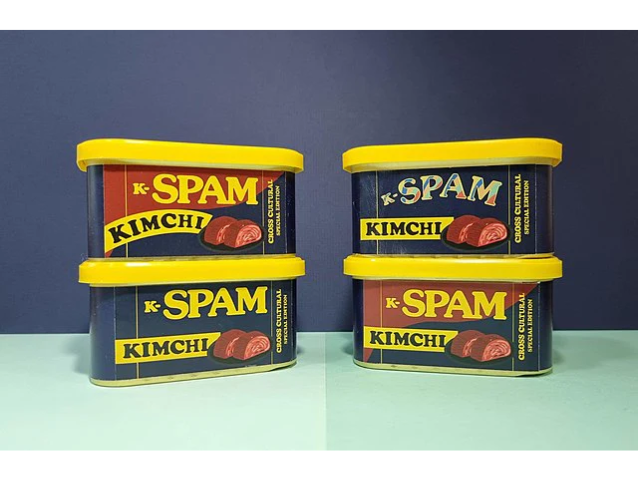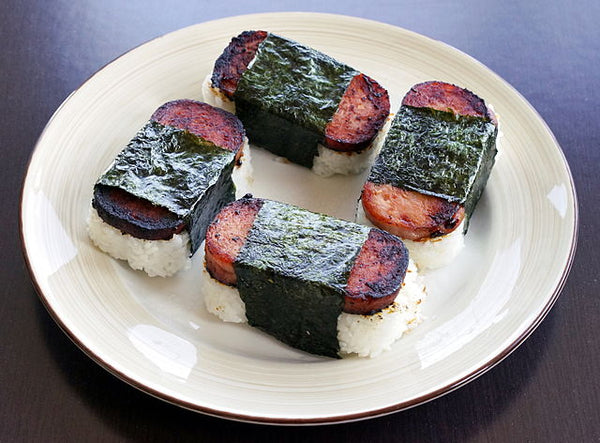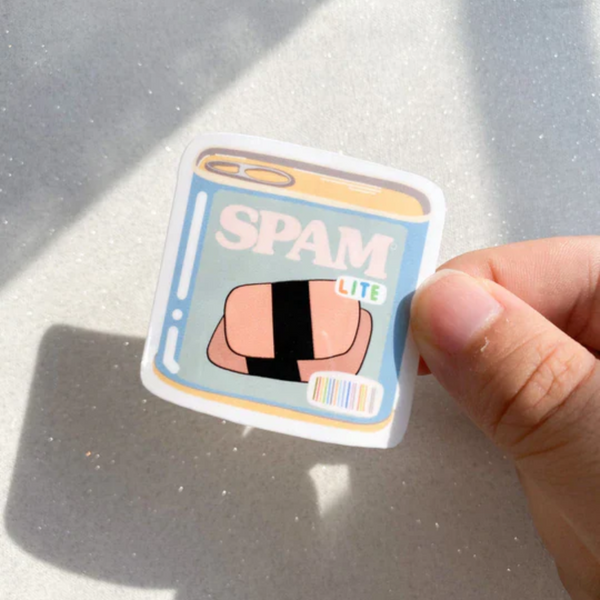
Spam Facts: 9 Tidbits You May Not Know About This Canned Ham
July 5 is unofficially Spam Day. It was on that day 1937 that the (in)famous meat in a can was introduced to the American public. While to some it may be a kitschy joke or unwanted email, to many Asians all over the world, it means much more than that. In celebration of this versatile ingredient on its birthday, here are nine fun facts about Spam.
It was developed during the Great Depression

On July 5, 1937, Hormel Foods introduced Spam as a convenient, non-perishable, and economical meat product. Head of the company Jay Hormel (and son of founder George) wanted a way to sell "the underused shoulder portions of hogs," says Live Science.
The name helped distinguish it
One problem Hormel had was competition. Many spiced ham products were already on the market. When Hormel's started to fall behind, he decided to make his brand stand out with a unique name. Legend says he held a naming contest with a $100 prize (almost $2,000 today), and the winner just so happened to be someone named Kenneth Diagneau, an actor and brother to Hormel VP, R.H. Daigneau.
As for what it means, no one knows for sure. Some speculations include "spiced ham," "shoulders of pork and ham," and "something posing as meat."
Spam has just six ingredients
Despite its reputation as a mystery meat, Spam has just six ingredients: pork with ham, salt, water, potato starch, salt, and sodium nitrate.
Spam may have helped the Allies win World War II
During World War II, more than 100 million cans were shipped to the Pacific to feed U.S. troops and as aid packages to devasted parts of Europe and Russia. In his memoir Khruschchev Remembers, the former Soviet premier recalled, "Without Spam, we wouldn’t have been able to feed our army. We had lost our most fertile lands.”
Hawaii has the biggest Spam market worldwide
It wasn't just soldiers who loved Spam while stationed in Hawaii during WWII. The locals became obsessed with it too. After the war, it became a staple for plantation workers since it didn't need to be refrigerated, was the perfect complement for another Hawaiian must have, rice, and was an economical means of protein in a state with a high cost of living.
This Hawaiian Spam fandom persists through today. About seven million cans are consumed a year (or five cans per person), and you can find Spam almost everywhere, from McDonald's to high-end restaurants.
It's not clear who invented Spam musubi

[Photo: Dllu (CC BY-SA 4.0)]
A seemingly quintessential Hawaiian dish is Spam musubi, a slice of Spam seasoned with shoyu-sugar sauce, placed on a block of white rice, and wrapped with nori. However, at least one source says a form of it may have originated in California. Hawaii food historian Arnold Hiura says he met some Japanese Americans who claimed to be the originators, tracing a form of it back to the internment camps during WWII.
As for inventors from Hawaii, one possibility is Mitsuko Kaneshiro. What began as snack for her kids turned into a treat for consumers, first out of a pharmacy then, by the 1980s, her own cafe, Michan's Musubi. There she churned out 500 Spam musubis per day, all hand made since this was before the mold was invented.
Speaking of which, another possible inventor is Barbara Funamara, also from Hawaii. At first her Spam and rice combo was triangular, like traditional onigiri, but then one of her employees, Matsuno Matsumoto-Kaohi, brought in a box which Ms. Funamara recognized as a viable mold. Thus was born the Spam-shaped Spam musubi we all know and love today.
South Korea has an iconic Spam dish too

[Photo: T.Tseng (CC BY 2.0)]
Budae jjigae was developed during the Korean War, incorporating Spam, American cheese, and franks and beans with noodles, vegetables, rice cakes, and other Korean staples. While budae jjigae roughly translates as "military stew," it's also known as "Johnson stew" or "Johnsontang," named for U.S. President Lyndon B. Johnson who apparently couldn’t get enough of the dish during his visit to South Korea.
In South Korea, Spam may be considered a luxury item

[Photo via Hormel Foods]
During Lunar New Year, Spam gift boxes are popularly given in South Korea. Perhaps because it used to be so hard to get — during the Korean War, it was only available at U.S. Army post exchange or PX stores — a whiff of luxury still clings to every tin. A gift box may cost you well over $70 and could include various cooking oils.
The Philippines has an all-Spam restaurant
Want an all-Spam dish menu? Head to the Philippines. The menu at Spam Jam (not to be confused with the annual food festival in Hawaii) boasts the Spam Burger, Spam Spaghetti, Spam Baked Macaroni, Spam Caesar Salad, and more.
Feeling Spammy now?
Be sure to check out our I Love Spam socks and these cute Spam stickers. Happy (unofficial) Spam Day!
[Lead image: Jeeyoon Park (CC BY-SA 4.0)]


